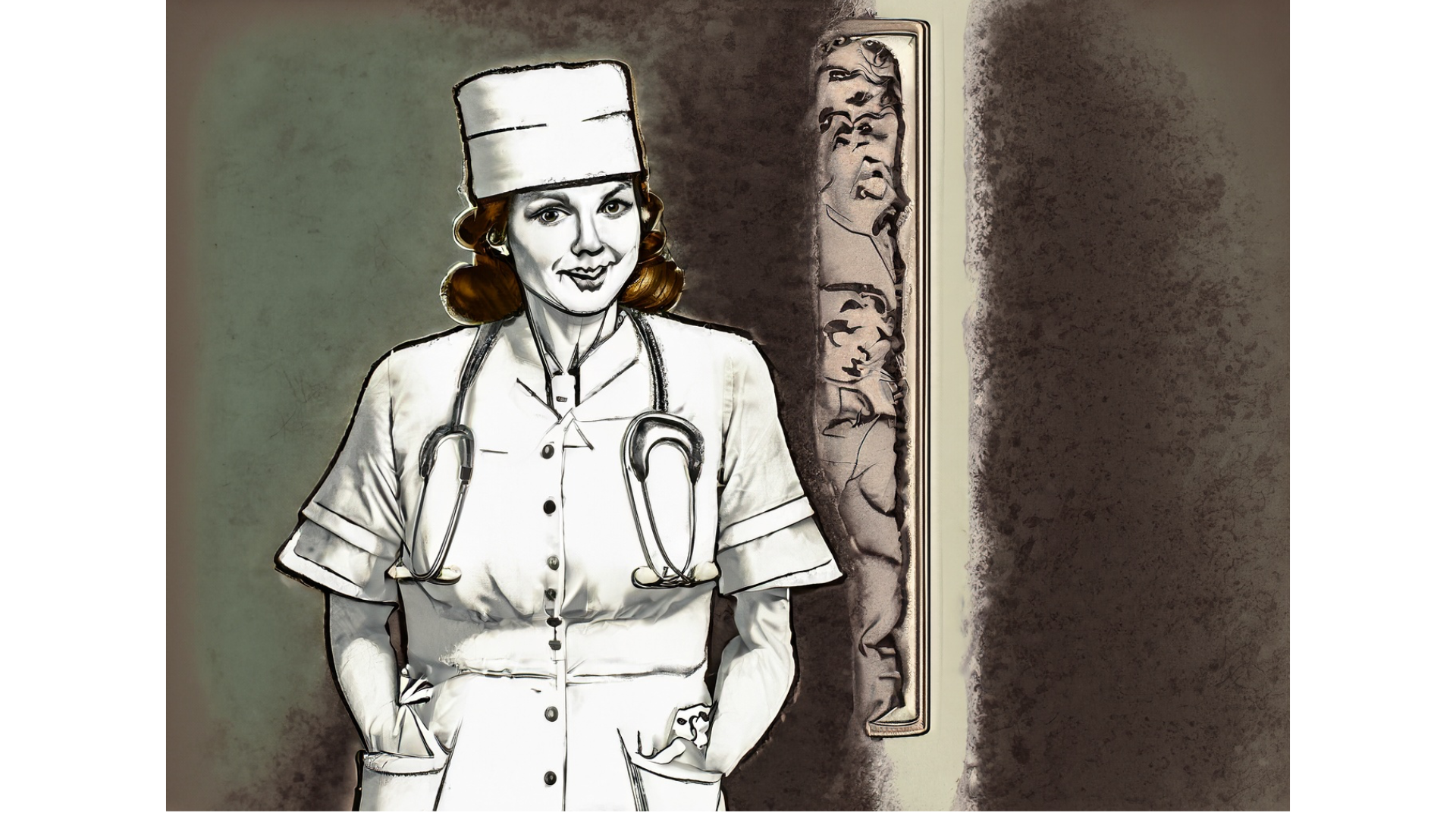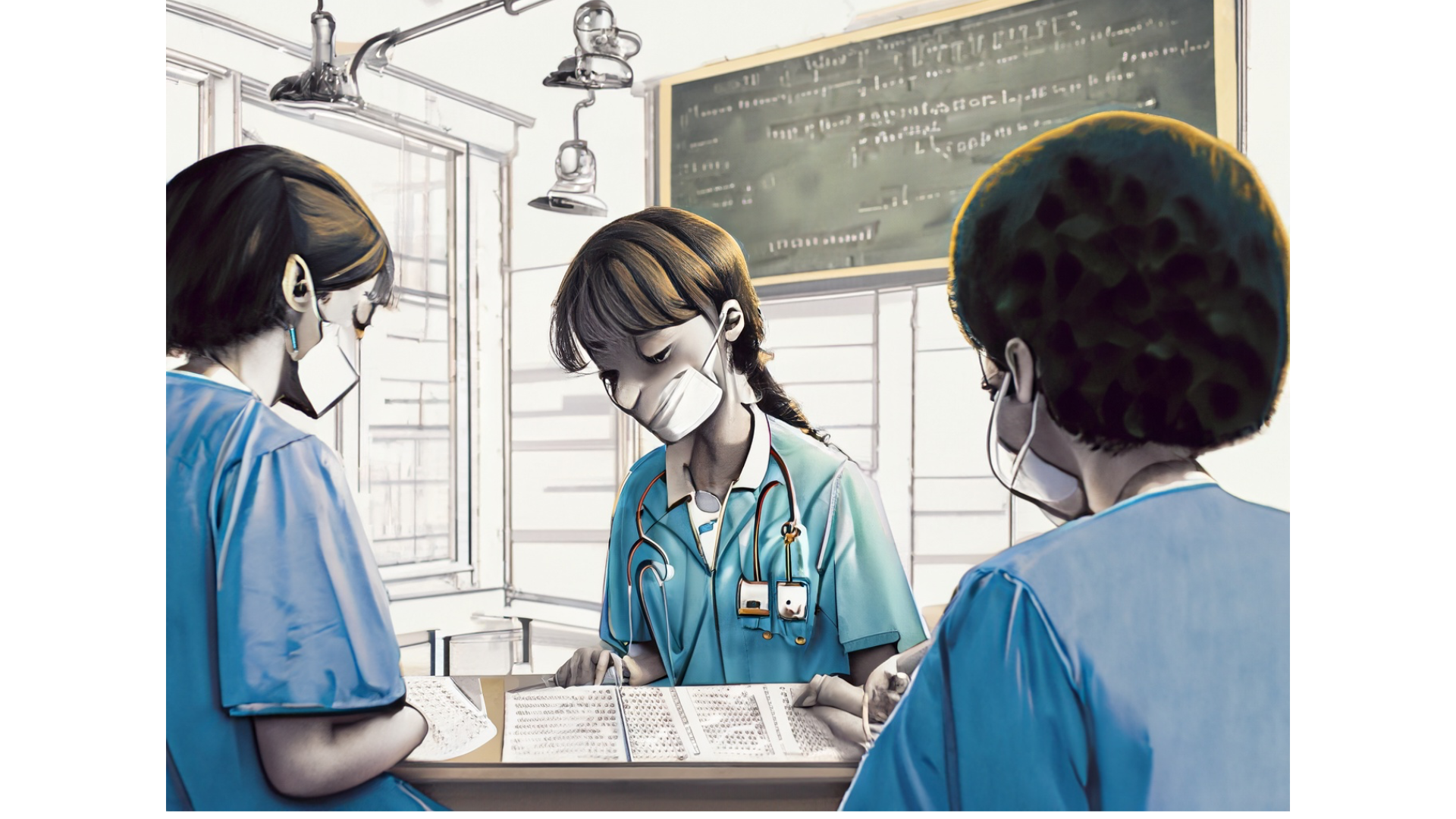The modern field of nursing has had a complex history in Latin America, from its origins as the purview of caretakers affiliated with Catholic religious orders and community clinics to an integral part of national health systems today.
According to researchers and historians, there have been three key influences on the formal preparation and professionalization of nurses in Latin America: 1) the internal sociopolitical evolution of each particular country in its process of nation-building; 2) the global modernization of the field of medicine overall, which included the professionalization of nursing; and 3) the US emphasis on public health, and the direct involvement of US agencies in supporting the development of schools of nursing throughout the Americas.
These three influences have intertwined since the end of the XIX century, helping us understand each stage of the evolution of nursing education in the region.

First stage: Transition from traditional caregiving to nursing as an organized discipline (end of the XIX century to the beginning of the XX century)
Throughout the XIX century, nursing evolved as a practical response to the need to care for the ill and wounded, generally carried out by women who were considered natural caretakers within the family, and in the public sphere, as part of religious orders charged with charitable care for the community. Nurses were particularly called upon in times of war and pandemics. In Latin America, nurses tended to belong to Catholic orders, who received informal preparation through experience and as part of their induction as novices.
Nursing started to become a secular occupation as a result of the liberal reforms of the second half of the XIX century, which limited the influence of the Catholic Church in many spheres and established a clearer separation between Church and State. This was especially the case in Mexico, Argentina, Chile, and Uruguay. Even in countries where Church influence remained strong, such as Peru, Ecuador and Bolivia, the Church eventually adapted to new trends in medicine and the governments’ interest in educating nurses by promoting the formal, secular professionalization of its religious nurses in order to maintain a foothold in this field. This was even encouraged by Pope Pius XI at the 1935 Congress of the International Congregation of Catholic Nurses.
At the same time, European nursing was predominantly influenced by the inheritance of Florence Nightingale, who emphasized nursing as an organized, technical discipline based on scientific principles. She also showed that nursing is essential for the overall functioning of hospitals; thus, nursing became firmly attached to the reorganization of these institutions. Soon, the ‘Nightingale’ view of nursing began to have an imprint on nursing worldwide, and this foreign influence made its mark on Latin America as well, through European-educated Latin American doctors who emphasized Nightingale’s perspective on nursing as a way to modernize hospitals and medicine overall.
Thus, the first schools of nursing, attached to hospitals, were founded in Argentina and Cuba. The Escuela Municipal de Buenos Aires, founded in 1885 by Cecilia Grierson, a European-educated teacher and medical student, is often cited as the first formal school of nursing in Latin America. In Cuba, the first school of nursing was created in 1900 by Americans, as a direct result of their occupation of the island.
Some historians attribute the early creation of nursing schools in Argentina, Chile and Uruguay to the fact that these countries had a strong liberal environment by the turn of century, and higher education levels for women. Chile’s first nursing school was founded in 1903, and it was among the first countries to have a nursing school attached to a university medical school, in 1906. Mexico also began creating a nursing school attached to the National Polytechnic Institute at the turn of the century. Uruguay founded a ‘Nightingale method’ based school in 1912. In Brazil, the first policies of medical secularization resulted in attempted schools of nursing in the 1890s and, finally, a nurse training school attached to a public hospital in 1902. In Colombia, a nursing school was founded in Cartagena in 1903 to train women in obstetric techniques.
In Bolivia, Ecuador and Peru, the influence of the Church remained strong for a longer period; thus, the first nursing schools were religious, or attached to the military. In Venezuela, Paraguay and Central America, the advancement of medicine took place in important economic enclaves under the influence of the United States.
These schools provided a professional framework for nursing, which also contributed to the empowerment of women by redefining caregiving – traditionally confined to the home or religious orders -and giving them a legitimate, recognized channel for working in the public sphere. However, the fact that nursing was still fundamentally defined as ‘feminine’ work meant that the educational requirements for entry to nursing schools were very low.
These schools, in line with Nightingale’s inheritance, also emphasized the apprenticeship method, where practical experience was paramount, and theory was secondary. Generally, these first Latin American schools were privately run by foreign-educated or foreign doctors and nurses and co-existed with the preparation of nurses still present in Catholic institutions. Nurses were generally known as ‘Visiting Nurses’ - visitadoras, ‘Childbirth-assisting Nurses’ – parteras, or ‘Hospital Nurses’ -hospitalarias, depending on their role and preparation.

Second stage – The consolidation and expansion of nursing schools – 1910s to 1950s
At the beginning of the XX century, several social and economic processes in the United States – including rapid industrialization, which exacerbated poverty and health problems among the working class, an emphasis on a strong, healthy workforce for the capitalist economy, and the need for a strong military in light of the First World War – came together with key advances in medicine, such as the success of vaccines and a better understanding of epidemiology and preventive care, to foster a strong public health movement. The health of the community – over and above individual health – became paramount, as did the idea of separating preventive care from therapeutic care.
This emphasis on public health was also becoming apparent in Latin American countries, as part of government campaigns to improve the health of the masses. Given the United States’ overall strategy to maintain a sphere of influence in Latin America through socioeconomic aid and cooperation, U.S.-based foundations offered key financial and technical support to bolster public health in Latin American countries. This included help with creating new schools of nursing and strengthening existing ones, through bilateral agreements between Latin American governments and the International Health Board of the Rockefeller Foundation, the American Red Cross – and its local chapters – and, at a later stage, the Pan-American Health Organization - PAHO.
Thus, the Red Cross was instrumental in creating nursing schools in Mexico in 1907 and Brazil in 1916, among others. Between the 1920s and the 1950s, governmental agreements with the Rockefeller Foundation strengthened the professionalization of nurses in Mexico, Brazil, Argentina and Chile. In Brazil, for example, the newly created National Department of Public Health established a nursing school in 1923 with a public health focus, financed by the Rockefeller Foundation.
Existing nursing schools started having more stringent entrance requirements, asking for 9-12 years of schooling. Schools’ curriculum was also strengthened, focusing on primary health care, preventive medicine and community health.

Third stage – Nursing as a profession taught at higher education institutions – 1950s to the present
After WWII, Latin American countries continued their process of modernization through the establishment of mass systems of education and strengthening national universities. This also affected the field of nursing; faculties of nursing began to be established as an integral part of universities and medical schools at a larger scale.
In 1969, a key PAHO conference defined three separate tracks for nursing education in Latin America – nurses with a higher-level academic degree, nurses with a secondary-school degree, and auxiliary nurses/nurse assistants, who only required a primary school degree before their practical training.
Nursing faculties were thus organized in a more complex manner, with a more elaborate curriculum; men also began entering the profession. In the 1970s, the PAHO was once again instrumental in expanding the field of nursing by proposing different specializations such as maternal and infant health, surgical assistance, and mental health aid. In the 1960s and 1970s, countries throughout the region also began master’s and PhD programs in nursing.
In addition, key transnational nursing organizations were established during the 1970s and 1980s, namely the Latin American Association of Schools and Faculties of Nursing – Asociación Latinoamericana de Escuelas y Facultades de Enfermería, ALADEFE – and the Pan-American Federation of Nursing Professionals – Federación Panamericana de Profesionales de Enfermería – FEPPEN.
In sum, the rapid professionalization of nursing in Latin America in the post WWII era has resulted in the growth of nursing schools in Latin America, from only around 257 nursing schools in 1970 to over 1,200 nursing schools with baccalaureate programs in 2016, according to PAHO data.
References
Alina Souza, “La formación en enfermería y el desarrollo socioeconómico en América Latina 1850-1950,” Revista de Administración Sanitaria Siglo XXI, Vol. 1, Num. 4, octubre 2003, at: https://www.elsevier.es/es-revista-revista-administracion-sanitaria-siglo-xxi-261-articulo-la-formacion-enfermeria-el-desarrollo-13055235
Maria Soledad Zarate, “La enfermería en América Latina: Estado, asociaciones y la Fundación Rockefeller, Siglo XX,” Nuevo Mundo Mundos Nuevos, Questions du temps présent, octubre 2019, at: http://journals.openedition.org/nuevomundo/77338
“Presente de la enfermería americana,” Crónicas Latinoamericanas, undated, at: https://instituciones.sld.cu/feppen/files/2013/04/Presente-de-la-enfermería-americana1.pdf
Lucila Cardenas Becerril, “History of Nursing Education and Contemporary Trends,” Historia da Enfermagem, Revista Electrónica, 2019, 9(1), at: http://here.abennacional.org.br/here/v9/n1/_EDITORIAL-2_ingles.pdf
Silvia Elena de Bortoli Cassiano et. Al., “The Situation of Nursing Education in Latin America and the Caribbean: Towards Universal Health,” Revista Enfermagem, 2017, 25, at: https://www.ncbi.nlm.nih.gov/pmc/articles/PMC5466053/